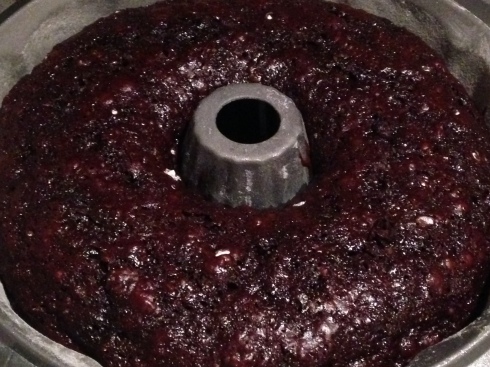
Well, during my far-too-long Cats and Commas hiatus, I’ve actually been baking quite a bit. Every holiday, birthday, etc., is a reason to share a baked good, and I take almost every opportunity possible.
Above is a collaboration apple pie that Hannah and I made together while visiting our friends in Montana in January. We didn’t follow a recipe per se, but we did use a standard all-butter crust and a standard filling of apples, lemon juice, sugar and cinnamon. One of the highlights of the trip, aside from the board games and microbrews, was our visit to the Museum of the Rockies, where we were gifted these fabulous dinosaur cookie cutters.
We served this pie a la mode, with Graham Slam ice cream, and, yes, it was as good as it looks (not even close to a humble brag). Also, for those of you science nerds, Hannah shared this excellent apple pie graphic a while back, which explains the science behind a great pie.

On the other side of the apple pie spectrum, for the Super Bowl I tried a mock apple pie, made with nothing but Ritz crackers, water, lemon juice, sugar, cinnamon and cream of tartar (which I assume helps with the texture). A creation of the Depression era, when fresh foods were likely scarce and processed foods were likely cheaper, the Super Bowl-watchers who ate this pie without knowing what was in it were convinced it was regular old apple.
And, by accident, my crust turned out looking like a giant version of a Ritz cracker.

The interior certainly had the gooey texture of an apple pie, just without the apple chunks. It was a bit on the sweet side for my taste, but it was an interesting experiment with a unique historical past. The recipe I used came from the cookbook “Pie,” a volume with hundreds of recipes, bits of history and techniques.

For Eileen’s birthday in mid-February, I made mini-Greek yogurt and honey pies, which we’ve made before as a previous Cats and Commas challenge. Whipped cream, gelatin and Greek yogurt (chilled in the fridge) top a graham cracker crust, and it’s a delicate, delicious combination. For these, I used mini-springform pans, which are quite handy for individual servings.

My most recent pie creation was in honor of Pi Day on March 14, which I’ll write a separate post about to share some links from around the Web. For this pie, I decided on a “use-what’s-in-your-pantry” philosophy, which led to vanilla cream pie with a graham cracker crust and meringue. The meringue only makes sense for using up your leftover egg whites, because the pie filling calls for the same amount of egg yolks that you need (recipe also from “Pie”).
This was a hit at work, where we had a buffet of different varieties to choose from, including a tasty, cookie-like pie that’s different than any I’ve tried before. For lack of a better descriptor, I assume the recipe is something like this.
It’s no coincidence that each month in 2014 has featured pie as a highlight. I hardly need an excuse to make one, but then again, Easter is only a couple weeks away.
Tags: apples, Greek yogurt, Honey, vanilla











